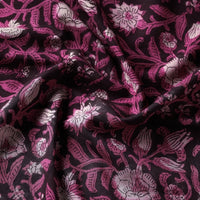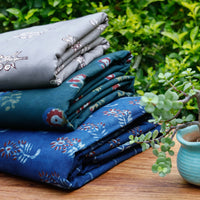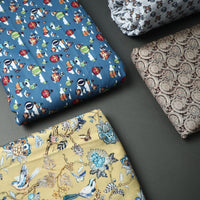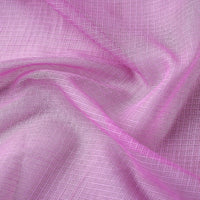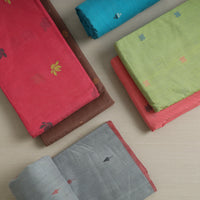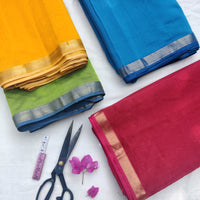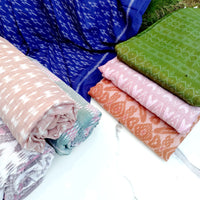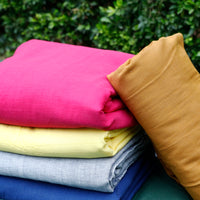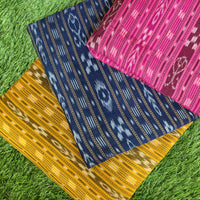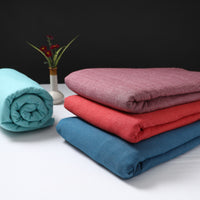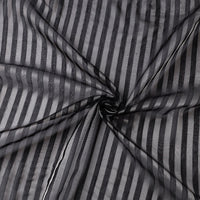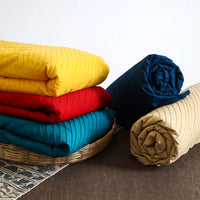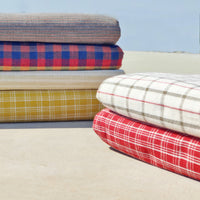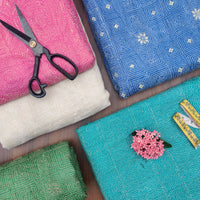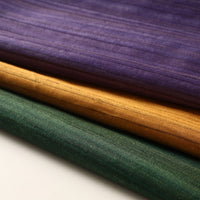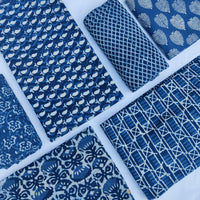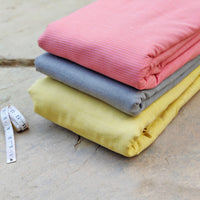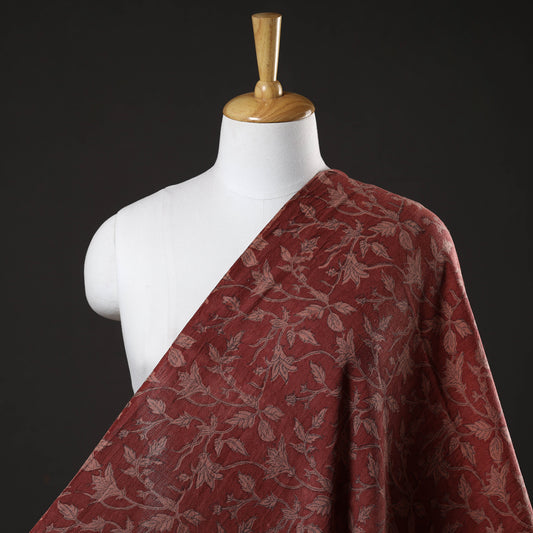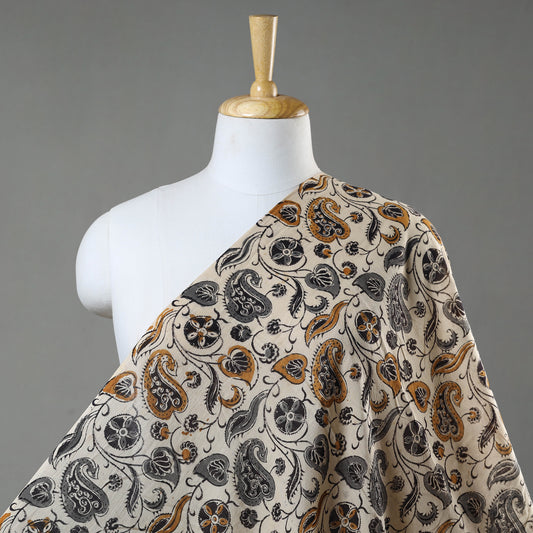Kalamkari: Crafting Stories Through Fabric - The iTokri Way
The Timeless Art of Kalamkari: Exploring Tradition and Craftsmanship
Kalamkari, an ancient form of Indian textile art, is a testament to the country’s rich cultural heritage. The term “Kalamkari” is derived from the Persian words “Kalam,” meaning pen, and “Kari,” meaning craftsmanship, which together describe the meticulous process of hand-painting or block-printing on fabric. This art form has thrived for centuries, primarily in the regions of Srikalahasti in Andhra Pradesh and Pedana in Telangana, where artisans continue to preserve and innovate within this traditional craft.
A Journey Through History: The Origins of Kalamkari
The history of Kalamkari can be traced back over 2,000 years, where it began as a form of narrative art, telling stories from Hindu mythology, epics, and folklore. Originally, Kalamkari was used to decorate temple walls and as a form of religious expression. The artists, known as Chitrakars, would travel from village to village, narrating tales through their vibrant paintings. Over time, this craft evolved, and the techniques of hand-painting and block-printing on textiles were developed.
In the 17th century, during the Mughal era, Kalamkari gained prominence as a textile art form. The Mughal rulers were patrons of the arts and encouraged the use of Kalamkari in their court, where it was used to create elaborate wall hangings, garments, and decorative items. The craft flourished under their patronage, and distinct styles of Kalamkari emerged, particularly in the regions of Srikalahasti and Pedana.
Srikalahasti Kalamkari: The Pen and the Myth
Srikalahasti, a town nestled in the southern state of Andhra Pradesh, is renowned for its freehand style of Kalamkari. Here, the art form is deeply intertwined with religious themes, particularly those derived from Hindu mythology. The process begins with the artist, or Kalamkar, sketching intricate designs onto the fabric using a bamboo or date palm stick, sharpened at one end like a quill. These designs often depict scenes from the Ramayana, Mahabharata, and Puranas, with each piece narrating a specific story.
The fabric is treated with a series of natural dyes, each color derived from organic sources such as plants, roots, and flowers. The outlines are drawn with a mixture of jaggery and iron filings, creating a deep black hue. This is followed by the application of natural dyes, which are carefully chosen to reflect the traditional color palette of Kalamkari—rich reds, deep indigos, and earthy browns. The entire process is painstakingly detailed, with each step requiring precision and a deep understanding of the craft, passed down through generations.
Pedana Kalamkari: The Art of Block Printing
In contrast to the freehand style of Srikalahasti, Pedana Kalamkari, hailing from the town of Pedana in Telangana, is known for its block-printing technique. This style developed as a more practical approach to producing Kalamkari on a larger scale, while still maintaining the craft’s authenticity and intricate designs.
The artisans of Pedana use hand-carved wooden blocks to imprint patterns onto the fabric. These blocks are often passed down through generations, with each block carrying its own history and significance. The designs typically feature motifs inspired by nature, such as flowers, birds, and animals, as well as traditional geometric patterns. Once the fabric is block-printed, it undergoes a similar dyeing process as in Srikalahasti, using natural dyes to bring the designs to life.
Despite the mechanized process of block printing, Pedana Kalamkari remains a highly skilled art form. The precision required to align the blocks and ensure even printing is a testament to the artisans’ expertise. Each piece of Pedana Kalamkari is a work of art, embodying the same spirit of storytelling and tradition as its freehand counterpart.
The Artisans Behind the Craft: Guardians of a Cultural Legacy
The artisans of Srikalahasti and Pedana are more than just craftsmen—they are the guardians of a cultural legacy that spans millennia. These artisans, often belonging to families that have practiced Kalamkari for generations, are deeply connected to their craft, with each piece they create being a reflection of their heritage and identity.
In Srikalahasti, the craft is often a family affair, with each member of the family contributing to different stages of the Kalamkari process. The men typically handle the drawing and dyeing, while the women assist with preparing the fabric and applying the colors. This collaborative effort ensures that the craft remains within the family, passed down from one generation to the next.
In Pedana, the community aspect of Kalamkari is equally strong. The town is home to numerous small workshops, where artisans work together to produce block-printed fabrics. These workshops are often part of cooperative societies, which help to protect the artisans’ rights and ensure fair wages. The cooperative model has been instrumental in preserving the craft, providing artisans with the resources and support they need to continue their work in an increasingly competitive market.
Human Interest Stories: The Heart of Kalamkari
Behind every piece of Kalamkari fabric lies a story—stories of artisans who have dedicated their lives to preserving this ancient craft, stories of communities that have come together to protect their heritage, and stories of innovation and resilience in the face of modern challenges.
One such story is that of Lakshmi, a Kalamkari artist from Srikalahasti. Lakshmi’s family has been practicing Kalamkari for over 300 years, with the craft being passed down through the women in her family. Despite the challenges of modern life, Lakshmi remains committed to her craft, waking up at dawn each day to work on her pieces. For her, Kalamkari is not just a livelihood, but a way of life—a way to connect with her ancestors and keep their traditions alive.
Another inspiring story comes from Pedana, where a group of young artisans have started their own cooperative to promote block-printed Kalamkari. These artisans, many of whom are in their 20s and 30s, are passionate about their craft and are determined to bring Kalamkari to a new generation of consumers. Through their cooperative, they have been able to secure better wages, improve working conditions, and create a platform for young artisans to showcase their work.
These stories are a reminder of the resilience and creativity of the Kalamkari community, and of the importance of supporting traditional crafts in the modern world.
The Role of iTokri: Championing Artisans and Craftsmanship
At iTokri, we are deeply committed to preserving and promoting India’s rich cultural heritage. As India’s premier artisan craft platform, we connect eco-conscious consumers with over 500 artisan groups from across the country, offering a curated selection of handcrafted products that celebrate traditional craftsmanship and sustainable practices.
Our collection of Kalamkari fabrics is a testament to our commitment to authenticity and cultural preservation. Each piece in our collection is sourced directly from the artisans of Srikalahasti and Pedana, ensuring that the craft remains true to its roots. By purchasing Kalamkari fabric from iTokri, you are not only acquiring a beautiful piece of textile art but also supporting the livelihoods of the artisans who create them.
At iTokri, we go beyond transactions to create a community of like-minded individuals who share a passion for traditional crafts and sustainable living. We believe in the power of storytelling, and we strive to share the unique stories of the artisans behind each product. Through our platform, we bring these stories to life, offering our customers a deeper connection to the products they purchase.
We are also committed to sustainability, using recycled materials in our packaging and supporting eco-friendly crafts that make a difference. Our approach is deeply rooted in local practices, ensuring that traditional techniques are preserved while meeting the demands of a global audience.
Why Choose iTokri for Kalamkari Fabric?
When you shop for Kalamkari fabric at iTokri, you are choosing more than just a product you are choosing to be part of a movement that values craftsmanship, sustainability, and cultural heritage. Here’s why iTokri is the best choice for your Kalamkari fabric needs:
-
Global Reach, Local Touch: While we serve a global audience, our approach remains deeply rooted in local practices, offering a platform where traditional techniques meet modern aesthetics.
Join the iTokri Family
By choosing iTokri, you are not just making a purchase—you are joining a family of individuals who share a love for traditional crafts and a commitment to sustainable living. Each item you buy tells a story of skill, tradition, and a passion for art. Experience the warmth of Indian hospitality and the luxury of genuine handcrafted products at iTokri. Shop with us today and be part of a movement that values beauty, craftsmanship, and a brighter future for artisans across India.
Explore our Kalamkari fabric collection and discover the perfect piece to add to your wardrobe or home decor. Whether you’re looking for a statement saree, a unique dress material, or a beautiful piece of home decor, iTokri offers a range of Kalamkari fabrics that cater to all your needs.
Thanks for reading this through till now :)
Hi, my name is Nitin and i am one of the founders of iTokri with Jia :)
We have been doing fabrics online since 2012, its more than a decade now!
Fabrics have has been our top selling category since inception, we have worked hard over the years to build this huge catalog of most authentic fabrics from all across the Indian crafts landscape.
I have personally travelled to most rural parts of North, south, western and eastern India, to find the best produced artisanal fabrics for craft lovers like yourself. We thrive and survive on super support of generation who loves to contribute to the ecosystem of Artisanal products.
No matter how much we try to add to the fabrics catalog there is still so much new to bring to you everyday! Thats what keeps us excited about what we do at iTokri.
If you want to explore all the fabrics at iTokri, Please visit this link " here "
We would also like you to take a look at our other textile product categories like Sarees, Dupattas, Stoles, Dress Materials and Blouses.
We also started creating exclusive garments with an inhouse brand "ITOKRI CASUALS", i would like like to welcome you to explore our Kurtas, Suit Sets, Dresses, Co-ord Sets, Night Suits and much more.
You should also check our non textile crafts in Home Decor, Stationery, Bags, and Jewellery.
We have created a dedicated landing page for all the crafts we have on iTokri here - CRAFTS OF INDIA
If you wish to directly reach out to me, you can drop me an email on nitin@itokri.com and i shall be happy to respond to you :)
While you go ahead reading the content below, I wish you a happy browsing at iTokri!
Frequently Asked Questions (FAQs) about Kalamkari Fabrics
1. What is Kalamkari Fabric and How is it Made?
Answer:
Kalamkari fabric is a traditional Indian textile that features intricate hand-painted or block-printed designs. The word "Kalamkari" comes from the Persian words 'Kalam' meaning pen and 'Kari' meaning craftsmanship. There are two main styles of Kalamkari: Srikalahasti and Pedana.
-
Srikalahasti Kalamkari: This style involves freehand drawing on fabric using a pen (kalam). Artisans use natural dyes extracted from plants, roots, and flowers to color the fabric. The process is complex, involving multiple stages of bleaching, dyeing, hand-painting, and washing, resulting in vibrant, durable designs.
-
Pedana Kalamkari: This style uses block printing techniques where wooden blocks with carved designs are dipped in natural dyes and stamped onto the fabric. After printing, details are often added by hand, creating a blend of precision and artistry.
2. What Makes Kalamkari Fabric Unique Compared to Other Fabrics?
Answer:
Kalamkari fabric is unique due to its detailed, hand-crafted designs and the use of natural dyes. Unlike mass-produced textiles, each piece of Kalamkari fabric is a labor of love, involving a deep understanding of traditional methods passed down through generations. The fabric often tells stories through its motifs, ranging from mythological tales to depictions of nature, making each piece not just a fabric, but a piece of art.
3. What Are the Different Types of Kalamkari Fabric Available?
Answer:
Kalamkari fabric is available in various materials and styles, including:
-
Cotton Kalamkari: Lightweight and breathable, ideal for everyday wear and home decor.
-
Silk Kalamkari: Luxurious and rich in texture, perfect for special occasions or elegant attire.
-
Blended Fabrics: A mix of cotton and silk, offering a balance between comfort and sophistication.
-
Block-Printed Kalamkari: Features patterns stamped onto the fabric using carved wooden blocks.
-
Hand-Painted Kalamkari: Each design is hand-drawn and painted, often reflecting intricate details and complex patterns.
4. How Do I Identify Authentic Kalamkari Fabric?
Answer:
To identify authentic Kalamkari fabric, look for the following:
-
Design Intricacy: Authentic Kalamkari will have detailed and intricate patterns that are hand-drawn or block-printed.
-
Natural Dye Colors: The colors in genuine Kalamkari fabrics are derived from natural sources like indigo, turmeric, and pomegranate rind, giving them a distinctive, earthy tone.
-
Texture and Feel: Authentic Kalamkari has a unique texture, slightly stiffer due to the natural dyeing process. The fabric may also have a distinct, pleasant smell from the natural dyes.
-
Artisan Marks: Small imperfections or variations in the design often indicate the hand-made nature of the fabric, a hallmark of authenticity.
5. What Are the Uses of Kalamkari Fabric?
Answer:
Kalamkari fabric is versatile and can be used in various ways:
-
Clothing: Ideal for making sarees, blouses, kurtas, and dresses. The fabric’s rich designs add a cultural and artistic touch to any wardrobe.
-
Home Decor: Use Kalamkari fabric for cushion covers, curtains, table runners, and wall hangings. Its vibrant patterns can transform any space into an artistic haven.
-
Accessories: Kalamkari can also be used to create bags, scarves, and other fashion accessories, adding a touch of tradition to modern styles.
6. How Should I Care for Kalamkari Fabric?
Answer:
To ensure the longevity of your Kalamkari fabric, follow these care tips:
-
Washing: Hand wash the fabric separately in cold water using a mild detergent. Avoid soaking the fabric for long periods.
-
Drying: Always dry Kalamkari fabric in the shade to preserve its natural colors. Avoid direct sunlight as it can cause the colors to fade.
-
Ironing: Iron the fabric on the reverse side using a medium setting. Place a cotton cloth over the fabric if ironing on the design side.
-
Storing: Store the fabric in a cool, dry place, away from direct sunlight. Keep it folded with a cotton cloth to protect the design.
7. Why is Kalamkari Fabric Considered Eco-Friendly?
Answer:
Kalamkari fabric is eco-friendly because it uses natural dyes and sustainable methods in its production. The dyes are derived from plants, roots, and flowers, minimizing environmental impact and avoiding harmful chemicals. The entire process, from preparing the fabric to the final design, emphasizes sustainability, making Kalamkari an excellent choice for environmentally conscious consumers.
8. What Regions in India Are Famous for Kalamkari Fabric?
Answer:
Kalamkari fabric is primarily produced in two regions of India:
-
Srikalahasti, Andhra Pradesh: Known for its freehand painting technique, Srikalahasti Kalamkari often features mythological themes and religious motifs. The artisans here have mastered the art of creating detailed, intricate designs using natural dyes.
-
Pedana, Andhra Pradesh: Famous for block printing, Pedana Kalamkari involves using wooden blocks to stamp designs onto the fabric. This region’s artisans excel in creating patterns inspired by nature, making the fabric popular for both traditional and contemporary uses.
9. Is Kalamkari Fabric Expensive?
Answer:
The price of Kalamkari fabric can vary depending on the material (cotton, silk, or blended), the complexity of the design, and whether it is hand-painted or block-printed. Generally, Kalamkari fabric is more expensive than mass-produced textiles due to the labor-intensive process and the use of natural dyes. However, iTokri offers a range of Kalamkari fabrics to suit different budgets, ensuring that everyone can enjoy this unique art form.
10. Where Can I Buy Authentic Kalamkari Fabric Online?
Answer:
You can buy authentic Kalamkari fabric online at iTokri, a trusted platform specializing in handcrafted and artisanal products from across India. iTokri offers a wide selection of Kalamkari fabrics, including cotton, silk, and block-printed options. Shopping with iTokri also means you are supporting local artisans and contributing to the preservation of traditional crafts. Plus, iTokri provides detailed product descriptions, high-quality images, and a secure shopping experience, making it easy to find the perfect fabric for your needs.
We would love to show you our elaborated and exclusive Handmade Fabrics Library :)
Our Bestsellers other than Kalamkari you saw above: Ajrakh Fabrics, Sanganeri Block Printed Fabrics, Pochampally Ikat Fabrics, Hand Printed Batik Fabrics, Bandhani Fabrics, Hand Block Printed Fabrics, Jacquard Weave Fabrics, Chanderi Weaving Fabrics, Pure Cotton Fabrics
Check All Fabrics Collection " here"
कलमकारी: भारत की सांस्कृतिक धरोहर और पारंपरिक कला का जादू
कलमकारी एक प्राचीन भारतीय कपड़ा कला है, जो भारत की समृद्ध सांस्कृतिक धरोहर का प्रतीक है। 'कलमकारी' शब्द फारसी भाषा के 'कलम' (पेन) और 'कारी' (कला) से लिया गया है, जो इस कला के बारीक और जटिल हाथ से बनाए गए डिजाइनों को दर्शाता है। यह कला मुख्य रूप से आंध्र प्रदेश के श्रीकाकुलम और तेलंगाना के पेदाना क्षेत्रों में विकसित हुई है, जहां आज भी कारीगर इस पारंपरिक शिल्प को संजोए हुए हैं।
श्रीकाकुलम कलमकारी: यह शैली फ्रीहैंड पेंटिंग पर आधारित है, जहां कारीगर प्राकृतिक रंगों का उपयोग कर धार्मिक और पौराणिक कहानियों को कपड़े पर उकेरते हैं। यह कला गहरे लाल, नीले और भूरे रंगों का प्रयोग करती है, जो कपड़े को अद्वितीय और जीवंत बनाते हैं।
पेदाना कलमकारी: पेदाना कलमकारी ब्लॉक प्रिंटिंग तकनीक पर आधारित है, जिसमें लकड़ी के ब्लॉक्स का उपयोग कर कपड़े पर बारीक डिजाइन बनाए जाते हैं। इस शैली में प्राकृतिक रंगों का भी उपयोग होता है, और इसके डिजाइनों में प्रकृति से प्रेरित फूल, पक्षी, और पशु शामिल होते हैं।
iTokri पर कलमकारी फैब्रिक खरीदने का मतलब सिर्फ कपड़ा खरीदना नहीं है, बल्कि आप एक सांस्कृतिक धरोहर का हिस्सा बन रहे हैं। iTokri न केवल पारंपरिक शिल्प को संरक्षित करता है, बल्कि उन कारीगरों की आजीविका का भी समर्थन करता है जो पीढ़ियों से इस कला को संजोए हुए हैं। हम गुणवत्ता, प्रामाणिकता और स्थायित्व पर ध्यान देते हैं, जिससे आपको बेहतरीन और विश्वसनीय उत्पाद मिलते हैं।
This content has been thoughtfully generated with some help of AI tools available on the web and properly moderated with expert inputs to make it authentic and reader friendly. bahut jyada mehnat lagti hai usme bhi :)
The purpose of the content is to help you understand the product, its source and the people working behind it... and also the history and legacy of Indian craftsmanship. Its little detailed but i am sure worth the read if you have reached here already!
If you think that this content is helpful, do share your feedback on whatsapp
by clicking
" here " or write to us
on the dedicated email id :
content@itokri.com :)
If you don't find it helpful, we would love to hear some feedback from you and shall improve on our content generation strategy for sure.
The primary goal of iTokri is to enrich your learning around crafts and authentic products our beautiful country makes!

















